

Derek Fung
Nissan Z Nismo manual revealed, facelift timing confirmed
3 Days Ago
Mazda Australia has crafted its own MX-5 track special in the form of the GT RS. It's a stack of fun, but is it worth the extra spend?



Marketplace Editor
New from
$49,120
excl. on-roads

Marketplace Editor
New from
$49,120
excl. on-roads


Marketplace Editor
New from
$49,120
excl. on-roads

Marketplace Editor
New from
$49,120
excl. on-roads
Where expert car reviews meet expert car buying – CarExpert gives you trusted advice, personalised service and real savings on your next new car.
Cars aren’t a passion for everyone, but there’s a handful of icons just about anyone will recognise.
There’s the Volkswagen Beetle, the Ford Mustang, the Porsche 911, and then there’s the Mazda MX-5.
Few nameplates have the same kind of universal recognition. Despite being more than 30 years old the MX-5 is alive and well, pure to its original form – a fun, affordable two-door convertible sports car.

In 2021 Mazda’s legendary roadster has received an equipment upgrade and new flagship variant, which is what’s on test here.
The Mazda MX-5 GT RS is available in both rag-top Roadster and folding hard-top RF body styles, and brings some more sporting upgrades familiar from past special editions – lighter BBS forged alloy wheels, Bilstein dampers for better track performance, Brembo performance brakes and a tower strut brace.
We drove the new range-topper on track and on road in regional Victoria to see if the track-focused changes are worth the extra spend, and also if the GT RS is still an all-round fun machine.
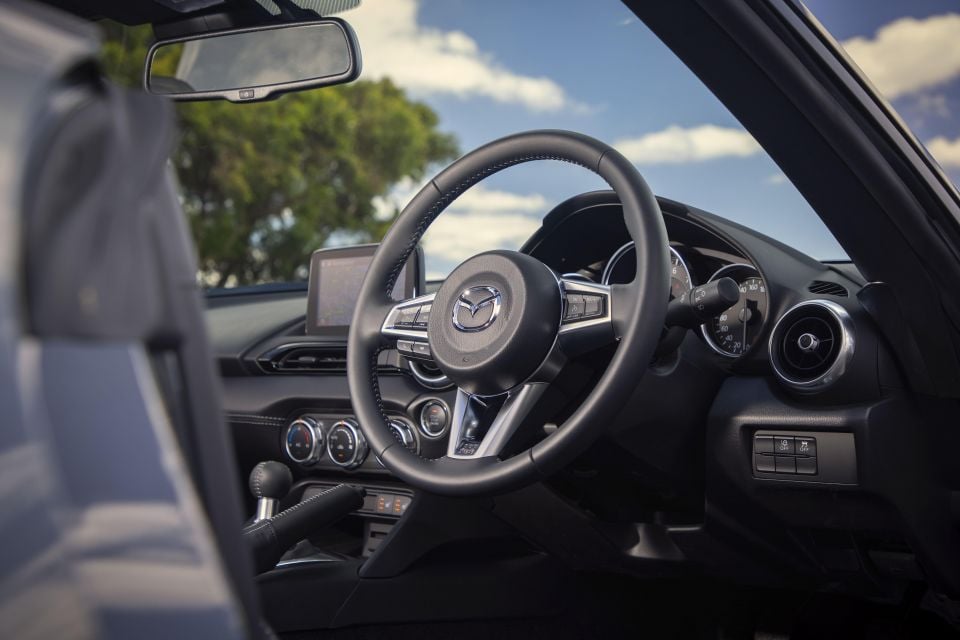
The 2021 Mazda MX-5 kicks off at $36,990 plus on-road costs for the entry-level 1.5-litre Roadster with a six-speed manual.
Here, we have the MX-5 Roadster GT RS and MX-5 RF GT RS, both exclusively fitted with the six-speed manual transmission. Prices start at $47,020 and $51,100 before on-roads respectively.
The MX-5’s closest competitors are the Toyota 86 GTS with the Dynamic Performance Pack (from $39,580) and the Ford Mustang 2.3L High Performance (from $50,990).
Worth noting is the fact the 86 is coupe only and lacks a lot of the infotainment and safety gear the MX-5 has as standard, while the Mustang 2.3L High Performance convertible is $60,290 and is auto-only.
MORE: 2021 Mazda MX-5 pricing and specs
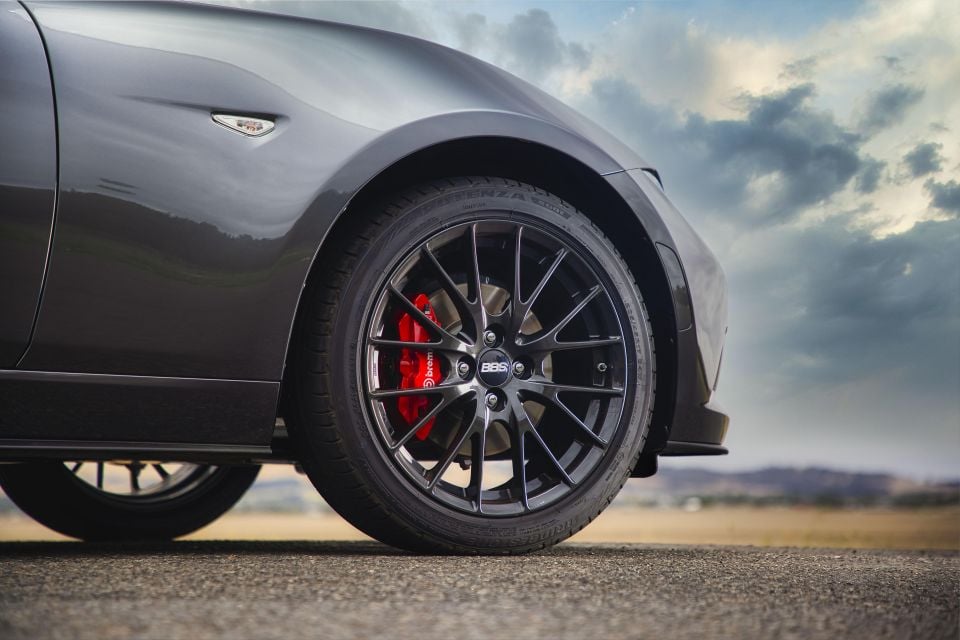
Buy your new car without the stress. It's fast, simple and completely free.

Great service from Travis and team, second time I have used this business would not hesitate to recommend them to anyone
Craig C.
Purchased a Ford Ranger in Sunshine Coast, QLD
CarExpert helped Craig save thousands on his Ford Ranger, now let us save you on your next new car.
Find a dealAs noted earlier, the GT RS models feature some exclusive equipment compared to other MX-5 models – most of which will be familiar from 2018’s MX-5 RF Limited Edition.
Highlights include 17-inch BBS forged alloy wheels wrapped in 205/45 Bridgestone Potenza S001 tyres, four-piston Brembo brakes on the front wheels with aluminium calipers and 280mm x 22mm ventilated discs (reducing unsprung mass by 2kg), Bilstein gas-pressurised dampers, and a tower strut brace at the front.
Like the wider range, the MX-5 GT RS also picks up wireless Apple CarPlay for the standard 7.0-inch MZD Connect touchscreen with rotary controller. Android Auto remains wired.
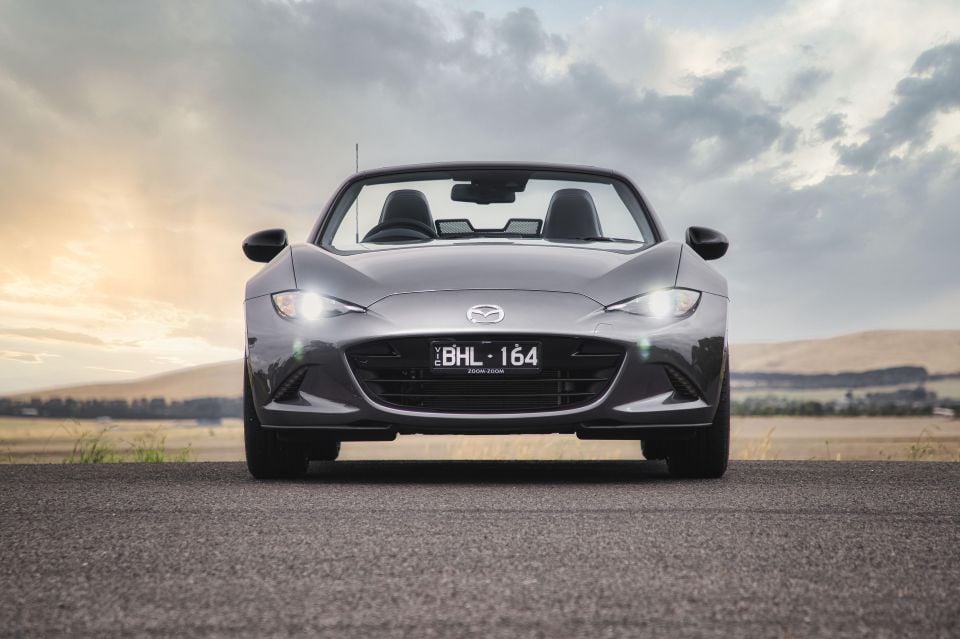
Elsewhere in the range for MY21, the RF GT Black Roof is now available with Pure White nappa leather upholstery, while Deep Crystal Blue paint joins the range of exterior colours. Black mirror caps have been added to the 1.5-litre Roadster and 2.0-litre RF.
Carryover equipment includes the aforementioned 7.0-inch touchscreen navigation system with DAB+ radio, Bluetooth phone and audio streaming, a rear limited-slip differential for manual models, LED headlights and tail lights, single-zone climate control, and push-button start.
Higher-grade models such as the GT RS gain adaptive LED headlights, leather seat trim, a nine-speaker Bose premium audio system with 203W amplifier and speakers in the seat headrests, keyless entry, an auto-dimming rear-view mirror, lane departure warning, and AEB in reverse.
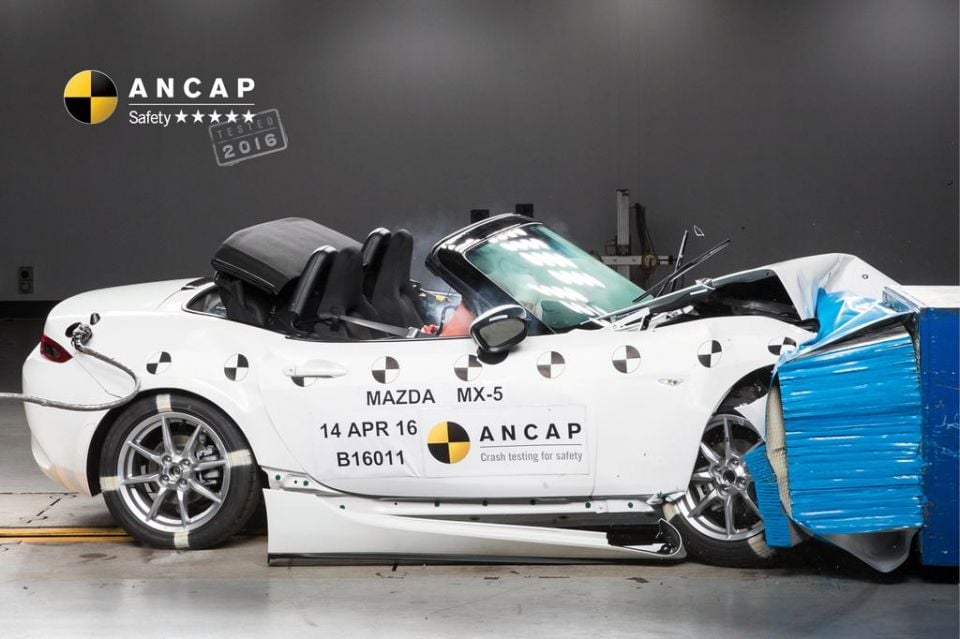
The MX-5 is one of the few sports cars with an ANCAP safety rating, and is one of even fewer with a five-star safety rating (with 2016 date stamp).
When it was tested against older criteria, the MX-5 managed an overall score of 35.20 out of 37.00, including a 14.20 out of 16.00 result in the frontal offset test and a perfect 16.00 out of 16.00 in the side impact test.
Dual frontal, side-chest and side-curtain airbags are standard, and advanced seat belt reminders are fitted to both front seats. There’s an active bonnet up front to protect pedestrians, too.
At the time of testing the MX-5 wasn’t fitted with any active safety technologies, but a series of rolling changes has seen low-speed autonomous emergency braking, blind-spot monitoring, rear cross-traffic alert, and traffic sign recognition fitted throughout the range.
GT models (including the GT RS) add low-speed AEB in reverse, lane departure warning, and adaptive headlights.
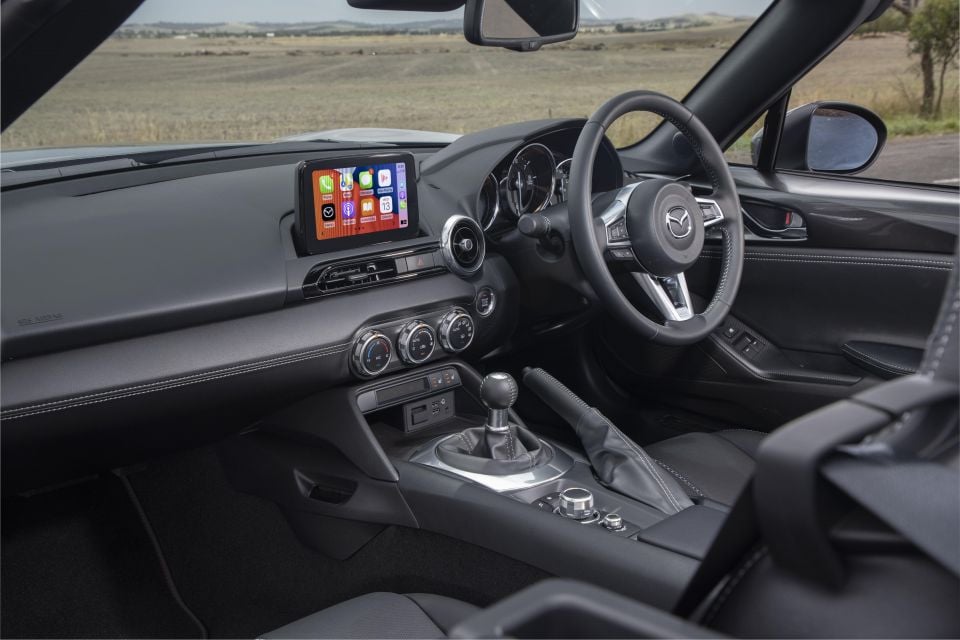
Not much has changed inside the MX-5’s cabin since launch, so its strengths and weaknesses carry through to the 2021 model.
As noted earlier there’s now wireless Apple CarPlay functionality for the MZD Connect 7.0-inch touchscreen with rotary controller, while Android Auto remains wired.
Hop in and you’re very much in a driver-focused sports car. Everything is quite compact and all the main controls fall within arm’s reach.
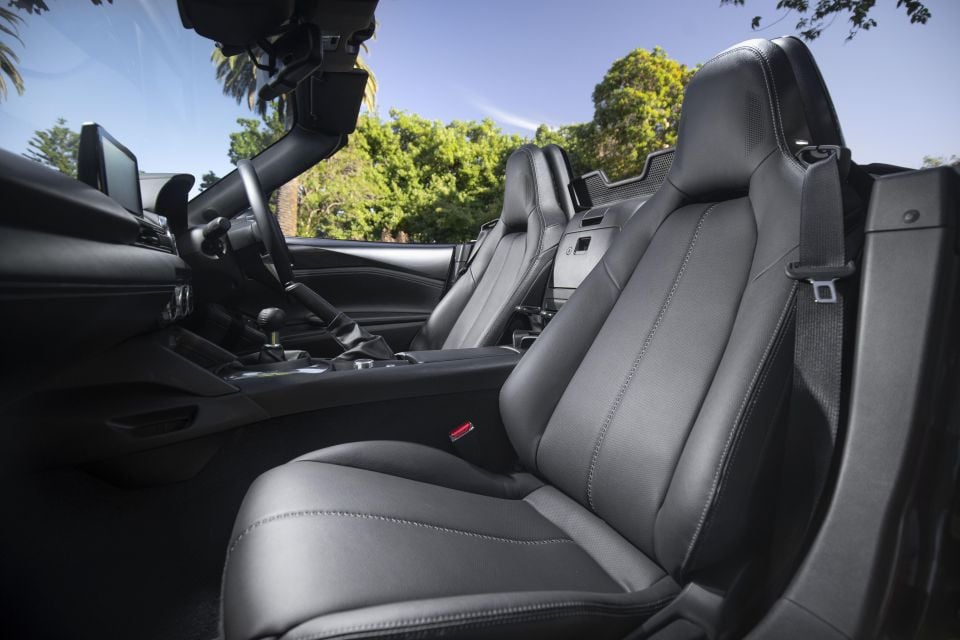
Despite being a little over six-one, I managed to find a comfortable driving position – those larger in stature will still find the cockpit a little cosy regardless.
Ergonomics and seat adjustment remain good, as does the solid build quality. Mazda has given the MX-5 a similar finish to the Mazda 2 light car and CX-3 crossover with common switchgear and harder plastics. Everything is well put together and despite the hard materials it doesn’t feel ‘cheap’.
I’m a huge fan of the watch face-like central tachometer and sporty steering wheel that has been rolled out across several other Mazda product lines, and the little ball shifter feels great in the hand.

Another highlight is the door tops finished in the same colour as the exterior. They may look a little boring in white or grey, but opt for Soul Red or one of the metallic blues on offer and they add a touch of colour to the GT RS’s black-only interior.
Storage has never been a strong point for the MX-5 – this is a teeny tiny two-door sports car at the end of the day – but there’s enough room for your phone under the centre stack, as well as removable cupholders between the seats. Behind those is a small cubby that can store loose items.
Boot space is fairly limited too. The Roadster claims to have 130L on offer, while the RF is slightly tighter at 127L. Neither will be able to accommodate a full set of suitcases but there’s enough space to carry a couple of overnight bags should you decide to take an extended road trip.
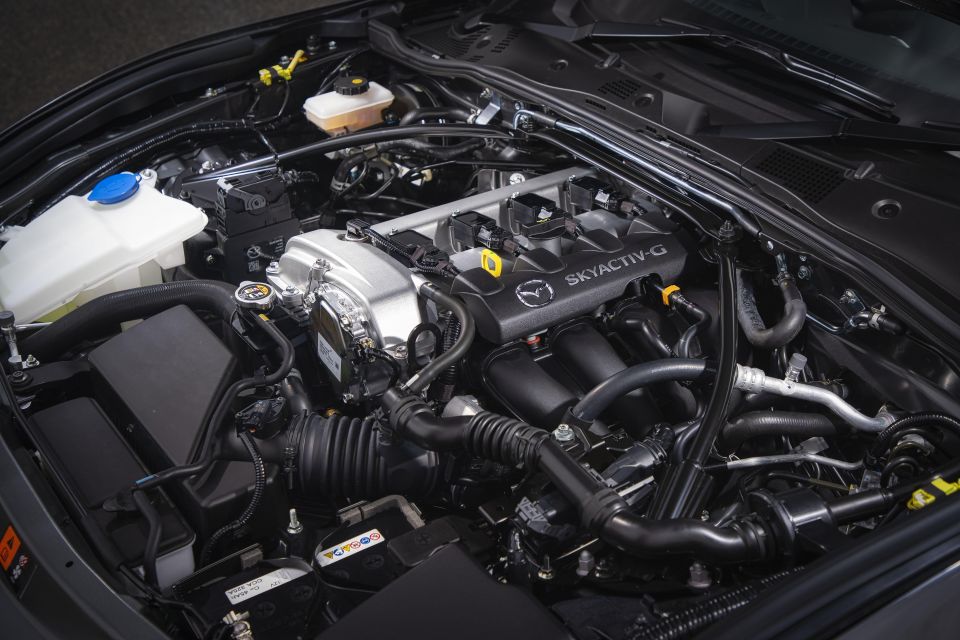
All models bar the base Roadster are powered by a 2.0-litre naturally-aspirated petrol engine with direct injection, developing 135kW at 7000rpm, and 205Nm at 4000rpm.
A six-speed manual transmission with rear limited-slip differential is standard, while a six-speed auto with paddle shifters is optional. The latter removes the limited-slip differential.
Mazda doesn’t quote a 0-100km/h time for the MX-5, though the company does list fuel consumption figures of 6.8L/100km for the Roadster and 6.9L/100km for the RF.
Unlike other Mazda models, the MX-5 requires 95 RON premium unleaded as a minimum. Our track session and brief road drive didn’t return realistic fuel figures for the real world, but you can expect the readout to be higher if you’re enthusiastic with the loud pedal.
The fuel tank also measures 45 litres.
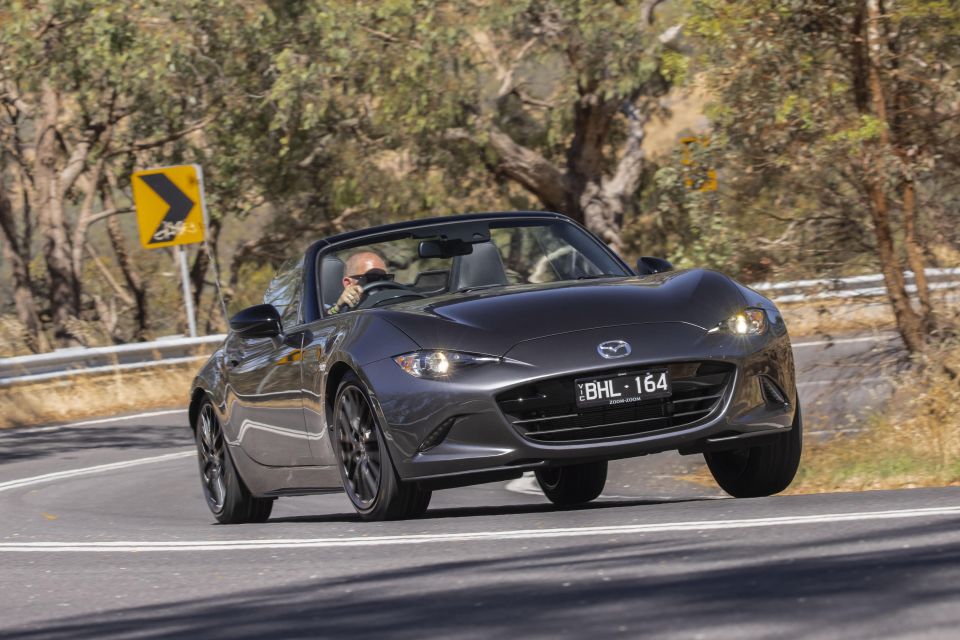
We were given the opportunity to drive the MX-5 GT RS on both road and track, as well as sampling both Roadster and RF body styles back-to-back with the in the non-RS MX-5 RF GT.
The MX-5 isn’t a ‘new’ car so to speak, so the main premise of these drives was to gauge the differences (if any) between Mazda’s new track-focused special edition and the standard car, as well as sampling its ability on country roads which is what most owners will likely drive them on.
The MX-5 is a hoot on track.
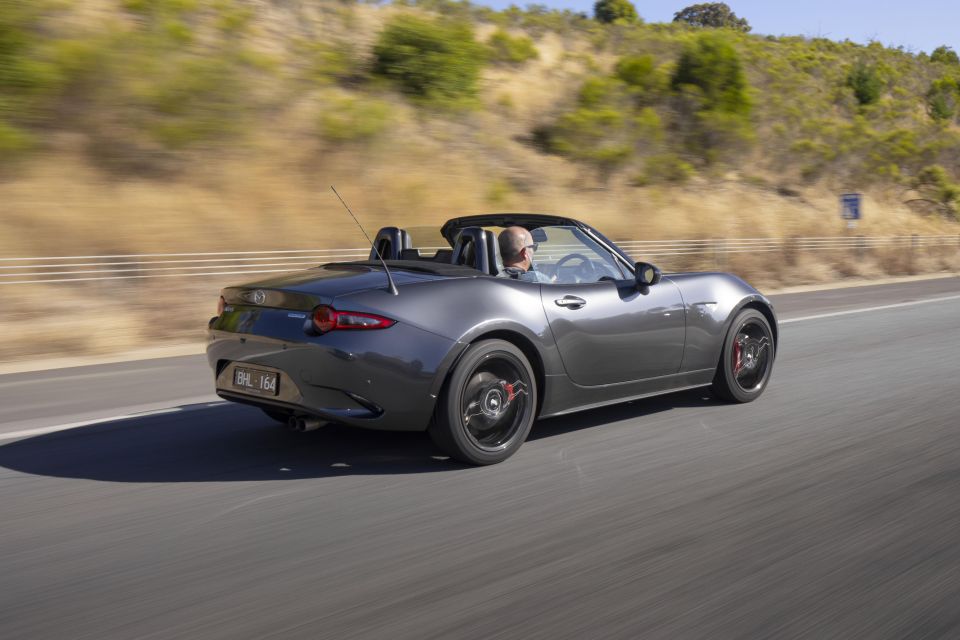
For some reason there’s a misconception these cars aren’t fast. We did a number of laps around Broadford Speedway, which was originally a motorcycle circuit, and the MX-5 never felt slow.
The current iteration of the 2.0-litre Skyactiv-G petrol engine is a delight in performance driving, happily revving right out to its 7000rpm redline – incidentally where peak power comes on tap. You can actually feel it pull harder as the needle flicks past 6000rpm.
On the back straight of Broadford Speedway we saw the speedo hit over 160km/h at full tilt, and with the roof down and the MX-5 at full noise you weren’t really thinking “gee, I wish this thing was faster”. The latest 135kW tune no doubt feels punchier than the 118kW of previous models, though.
Tip the MX-5 into some corners and the RS GT handles with the same enthusiasm as the standard model, with the same natural controlled body roll and rear-drive balance that lets you kick the tail out if you get on the power early.

Compared to the standard MX-5 RF GT, we found the RS GT in both Roadster and RF guises was that little bit more taut and controlled in terms of body roll, and the upgraded Brembo brakes were noticeably grabbier and more confidence-inspiring on the track.
If you plan on using your MX-5 for track work, the RS GT’s enhanced equipment does make a difference compared to lesser models… though perhaps testing them back-to-back is required to truly make the distinction.
Even between the Roadster GT RS and RF GT RS, we felt the former was that little bit lighter and sharper – likely a product of the 50kg weight difference in favour of the Roadster and the taller body structure of the RF.
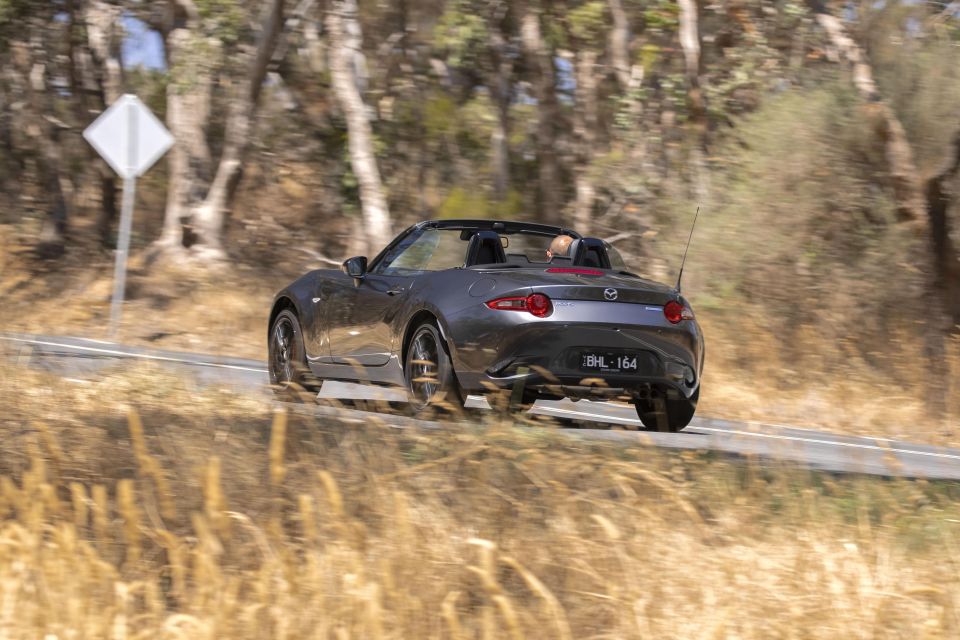
Where expert car reviews meet expert car buying – CarExpert gives you trusted advice, personalised service and real savings on your next new car.
We also hit the road in the MX-5 Roadster GT RS for a country road loop surrounding the Broadford Speedway, and despite the more focused damper, wheel and brake setup the MX-5 maintains its all-round usability.
Through the winding B-roads in country Victoria the MX-5 RF is settled and comfortable, with a pliant ride that really settles as the speed rises.
The MX-5 rewards you with keen dynamics and a direct, engaged feel through all the controls. You feel super connected regardless of the speed and environment, and that’s something you don’t really get at this end of the market.
Also, not a lot feels as good as driving the manual Roadster with the top down on a sunny day, carving up some twisty country roads with the wind in your hair. I felt like I was in a movie.
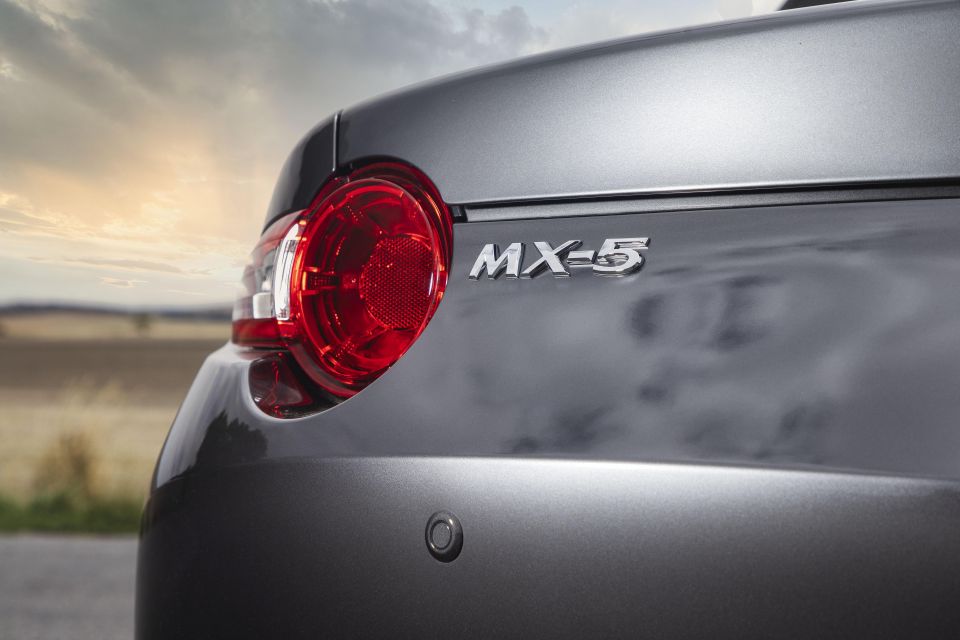
Like the wider Mazda line-up, the MX-5 is covered by a five-year, unlimited-kilometre warranty with premium roadside assistance for the same period.
Scheduled maintenance is required every 12 months or 10,000 kilometres. Whichever comes first – we’d like to see longer 15,000km for Mazda’s range, but the yearly intervals will be enough for most.
Mazda lists the first five services as $332, $377, $322, $377 and $322 – totalling $1730 for the first five years or 50,000km. However, these don’t include some additional items like brake fluid ($101 every 24 months or 40,000km) and engine air filter ($89 every 36 months or 60,000km).
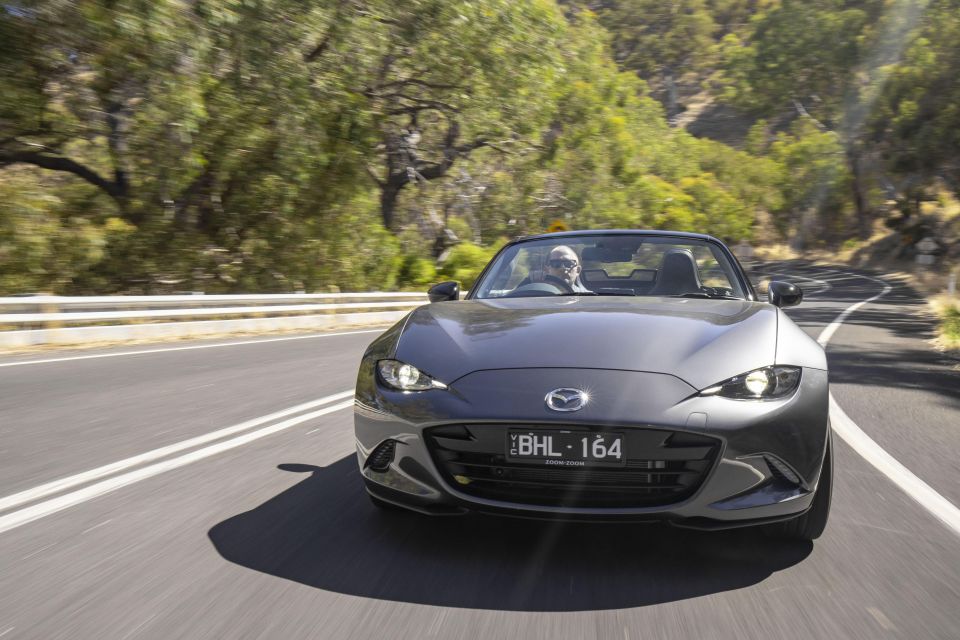
Even in its most track-focused form yet, the Mazda MX-5 GT RS is a fun, affordable, and chuckable sports car that’s more than equipped to handle the daily grind to and from work as well as carving up a winding B-road or your local circuit.
What it lacks in space and cargo-carrying capacity it makes up for with spunk, all-round comfort and standard equipment. It is a two-door roadster at the end of the day, and it fits the brief perfectly.
Is the RS GT worth the extra dosh? At around $3000 dearer than the equivalent MX-5 GT, it’s certainly not cheap by any means, but when you consider what a set of forged alloys as well as upgraded brakes and dampers might cost in the aftermarket, it seems like pretty decent value.
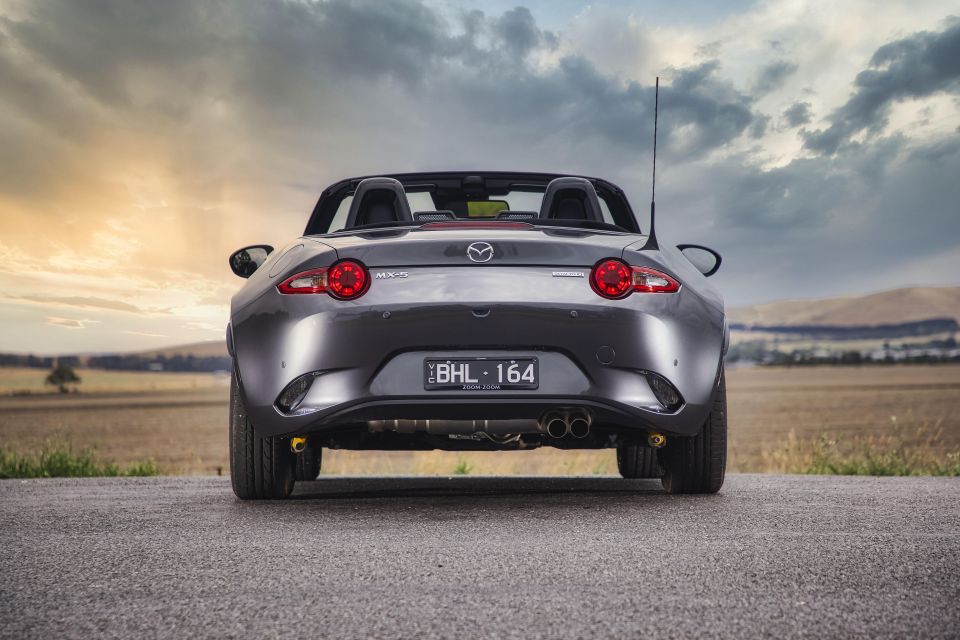
Plus, we can report there is a tangible difference when driving a the limit on the circuit – though it may require back-to-back testing to feel it for yourself.
For me, the Roadster is my pick in this GT RS trim. It seems to be the best expression of a more track-focused MX-5, and in our testing was better suited to regular use on the circuit.
This drive really reminded me why I love the MX-5 so much. Perhaps if they came out with a similar spec but offered a green over tan colour option, I’d have one parked in the driveway.
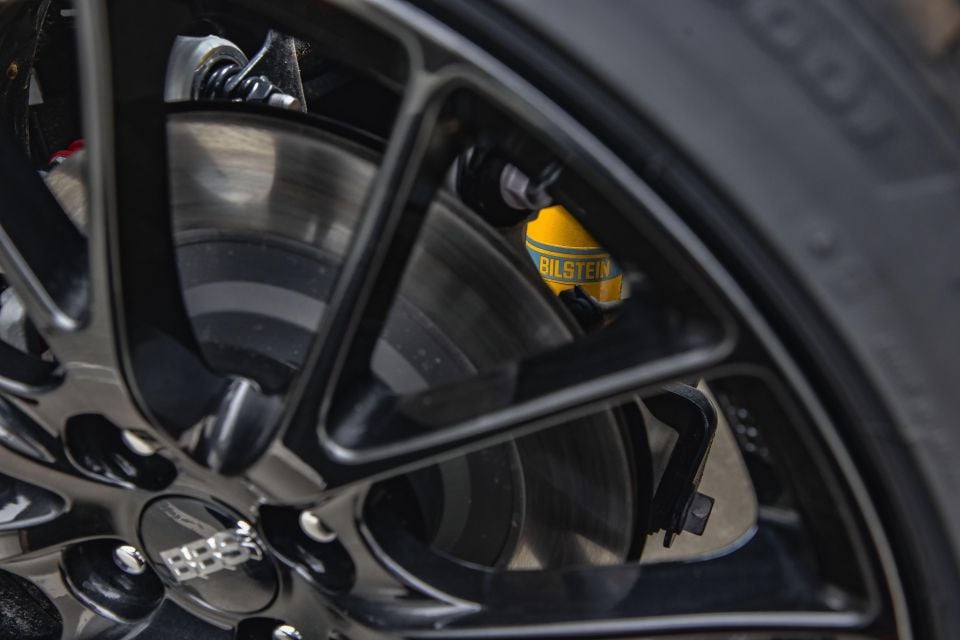
Click the images for the full gallery
MORE: Mazda MX-5 news and reviews MORE: Everything Mazda
Where expert car reviews meet expert car buying – CarExpert gives you trusted advice, personalised service and real savings on your next new car.
James Wong is an automotive journalist and former PR consultant, recognised among Australia’s most prolific motoring writers.


Derek Fung
3 Days Ago
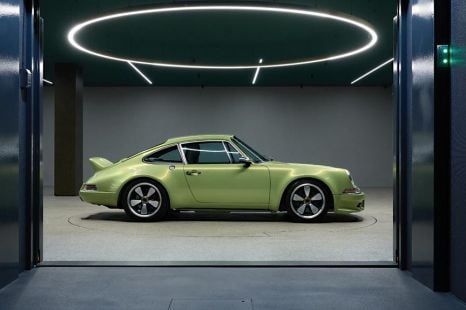

Marton Pettendy
19 Days Ago
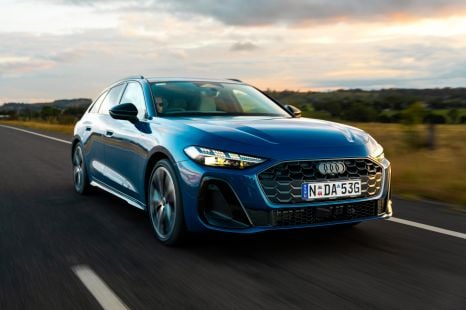

James Wong
27 Days Ago
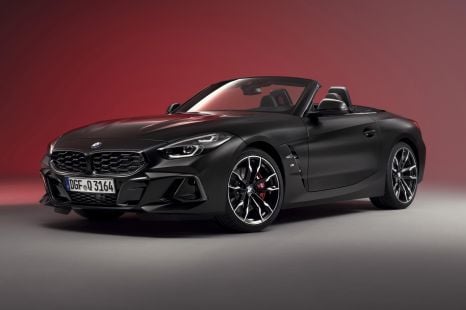

Damion Smy
28 Days Ago
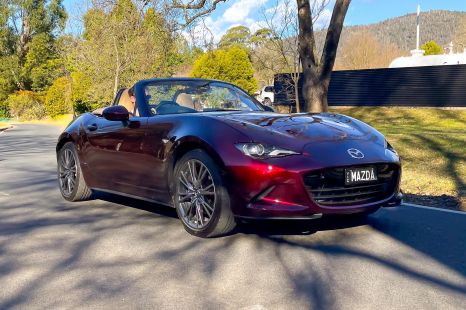

Josh Nevett
1 Month Ago
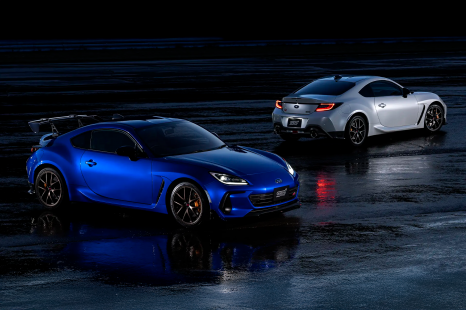

Max Davies
1 Month Ago